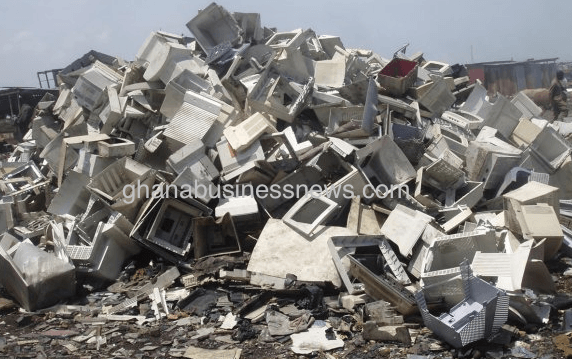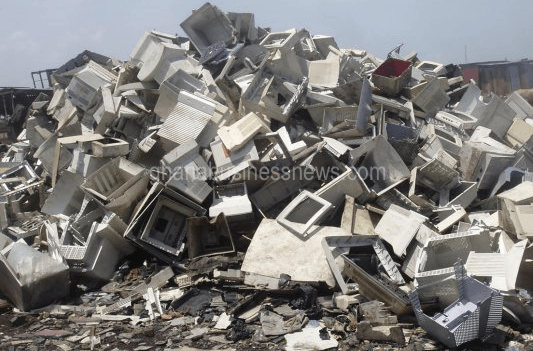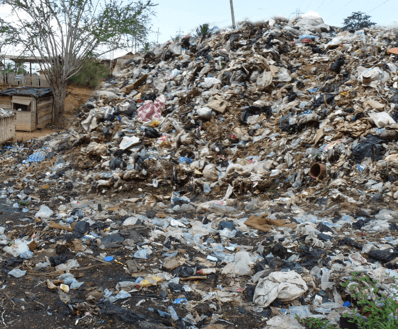


Unsustainable consumption patterns have been identified to be adding to the pile of electronic waste (e-waste) in the world, according to the Sustainable Development Goals 2024 Report. By 2030 e-waste volumes in the world are expected to reach 82 million metric tons.
The report however, notes that countries have made strides in meeting obligations under international environmental agreements on hazardous waste and other chemicals and implementing comprehensive approaches to combat environmental degradation.
But the rapid growth of global e-waste remains largely unaddressed, with only 22 per cent collected and managed sustainably, it said.
E-waste is the generic name for electronic or computer wastes, such as discarded electronics devices that come into the waste stream from several sources. They include gadgets like televisions, personal computers (PCs), telephones, air conditioners, cell phones, and electronic toys. The list can further be widened to include appliances such as lifts, refrigerators, washing machines, dryers, kitchen equipment or even aeroplanes.
E-waste is known to contain dangerous chemical pollutants that are released into the atmosphere and underground water.
The modes of disposal, which include dumping old gadgets into landfills or burning in smelters, also expose the environment and humans to a cocktail of toxic chemicals and poison.
These chemicals contain substances like lead, mercury and arsenic.
The cathode ray tubes (CRTs) in most computer monitors and television screens have x-ray shields that contain 4 to 8 pounds of lead, mostly embedded in glass.
Flat screen monitors that are mostly used in laptops do not contain high concentrations of lead, but most are illuminated with fluorescent lights that contain some mercury.
A PC’s central processing unit (CPU), the module containing the chip and the hard disk, typically contains toxic heavy metals such as mercury (in switches), lead (in solder on circuit boards), and cadmium (in batteries).
Plastics used to house computer equipment and cover wire cables to prevent flammability often contain polybrominated flame retardants, a class of dangerous chemicals. Studies have shown that ingesting these substances may increase the risk of cancer, liver damage, and immune system dysfunction.
Lead, mercury, cadmium, and polybrominated flame retardants are all persistent, bio-accumulative toxins (PBTs), that can create environmental and health risks when computers are manufactured, incinerated, landfilled or melted during recycling. PBTs, in particular are a dangerous class of chemicals that linger in the environment and accumulate in living tissues.
And because they increase in concentration as they move up the food chain, PBTs can reach dangerous levels in living organisms, even when released in minute quantities. PBTs are harmful to human health and the environment and have been associated with cancer, nerve damage and reproductive disorders.
Looked at individually, the chemicals contained in e-waste are a cocktail of dangerous pollutants that kill both the environment and humans slowly.
Lead, which negative effects were recognized and therefore banned from gasoline in the 1970s causes damage to the central and peripheral nervous systems, blood systems, kidney and the reproductive system in humans.
Effects of lead on the endocrine system have been observed, including the serious negative effects it has on children’s brain development. When it accumulates in the environment, it has high acute and chronic effects on plants, animals and micro-organisms.
Cadmium compounds are also toxic with a possible risk of irreversible effects on human health and accumulate in the human body, particularly the kidneys. Cadmium occurs in certain components such as SMD chip resistors, infra-red detectors, and semi-conductor chips.
Mercury on the other hand, can cause damage to various organs including the brain and kidneys as well as the fetus. More especially, the developing fetus is highly susceptible through maternal exposure to mercury.
These are only few of the chemicals used in the manufacture of electronics equipment. Other chemicals are Hexavalent Chromium which is used as a corrosion protection of untreated and galvanized steel plates and as a decorative or hardener for steel housings. Plastics including, PVC are also used. Plastics constitute about 13.8 pounds of an average computer.
The largest volume of plastics, 26 per cent used in electronics is PVC. When PVC is burned, dioxin can be formed because it contains chlorine compounds. Barium, is a soft silvery-white metal that is used in computers in the front panel of a CRT, to protect users from radiation.
Studies have shown that short-term exposure to barium has caused brain swelling, muscle weakness, damage to the liver, heart and spleen.
Considering the health hazards of e-waste, another ubiquitous computer peripheral scrap worth mentioning is toners. The main ingredient of the black toner is a pigment commonly called, carbon black – the general term used to describe the commercial powder form of carbon.
The report notes that while domestic material consumption and material footprints continue to expand, growth rates have slowed. Regional disparities underscore the need for targeted interventions based on varying consumption patterns and environmental impacts.
It adds that uncontrolled disposal of electronic and electrical equipment fuels vast e-waste stockpiles, exacerbated by rising consumption, short product life cycles and little repair. E-waste generation rose from 6.3 to 7.8 kilograms per capita from 2015 to 2022, reaching a total of 62 million metric tons of e-waste in 2022. Only 1.7 kilograms per capita was collected and managed in an environmentally sound manner.
The report states that even though high-income countries achieved collection rates of over 40 per cent, most e-waste was inadequately recycled or exported to lower-income countries where management infrastructure is not developed, inadequate or absent.
It cites Central and Southern Asia, Latin America and the Caribbean, and sub-Saharan Africa, where collection rates are below 5 per cent.
The report says inappropriate management by the informal sector results in environmental pollution and health hazards for workers and communities.
“By 2030, e-waste generation is projected to increase to 10 kilograms per capita per year (or 82 million metric tons in total),” the report said.
If all countries boost their collection rates to 60 per cent, 54 million metric tons of e-waste would be managed in an environmentally sound manner, with 30 million metric tons of metal resources viably recovered. This would also prevent 34,000 kilograms of mercury emissions and 209 million metric tons of CO2-equivalent emissions in 2030, it added.
The report makes it clear that achieving Goal 12 requires fostering circular economy models, sustainable production practices and responsible consumption.
“These approaches can take advantage of opportunities at every stage of production to reduce resource and fossil fuel use, drive innovation, conserve energy and mitigate emissions. Progress largely depends on robust regulatory frameworks, financial incentives and public awareness campaigns,” it said.
By Emmanuel K Dogbevi
Copyright ©2024 by NewsBridge Africa.
All rights reserved. This news item or any portion thereof may not be reproduced or used in any manner whatsoever without the express written permission of the publisher except for the use of brief quotations in reviews.
The post Patterns of consumption piles up e-waste in the world to 82 million tons by 2030 – Report appeared first on Ghana Business News.
Read Full Story















Facebook
Twitter
Pinterest
Instagram
Google+
YouTube
LinkedIn
RSS